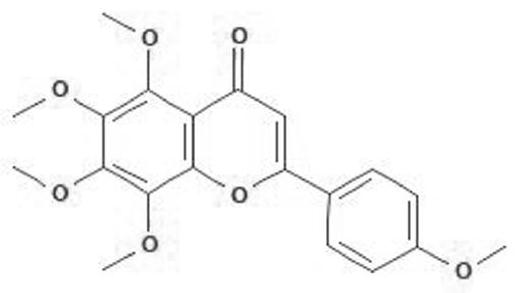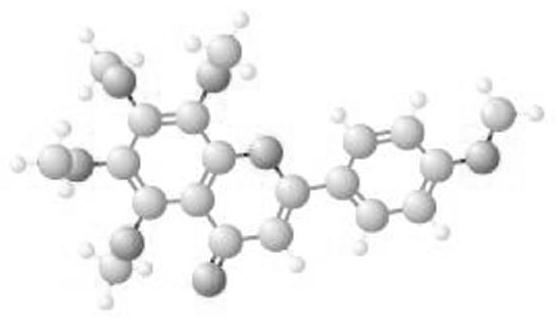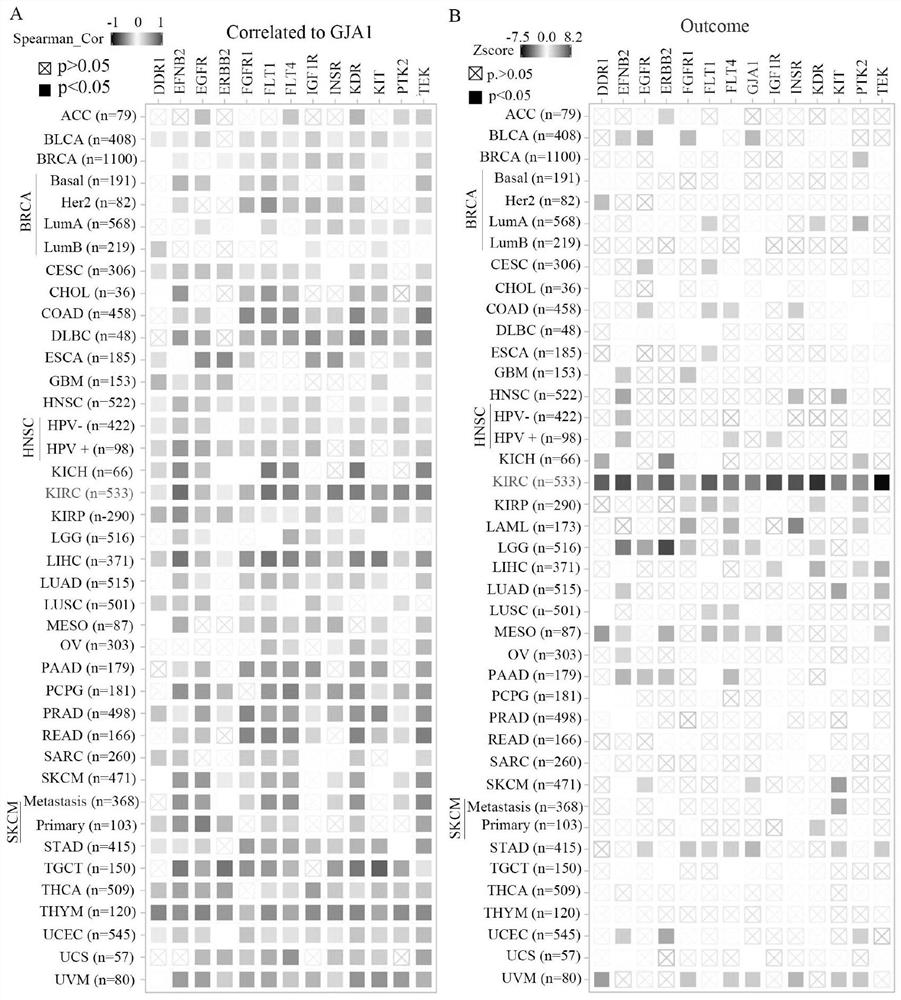Application of hesperetin and/or derivative thereof in preparation or serving as medicine for preventing and/or treating renal cell carcinoma
A technology for renal cell carcinoma and citrus peelin, which is applied in the field of biomedicine, can solve the problem of non-universal use of tumor drugs, and achieve the effects of preventing and/or treating renal cell carcinoma, inhibiting proliferation, and improving renal cell carcinoma.
- Summary
- Abstract
- Description
- Claims
- Application Information
AI Technical Summary
Problems solved by technology
Method used
Image
Examples
Embodiment 1
[0071] Example 1 Analysis of Cx43 expression, correlation and its relationship with prognosis of renal cell carcinoma
[0072] Except for a few cells (such as sperm, platelets, etc.), almost all cells in mammals are connected to each other through gap junctions (Gap junction, GJ). Small molecules below 1-1.5kDa, such as calcium ions, IP3, cAMP and free amino acids, can pass between cells through GJ, so that cells can share some small molecule metabolites and regulate intercellular signal transmission. Some microRNAs (miRNAs) can also be delivered from cells to neighboring cells via GJs. Cx43 is one of the most abundant junction proteins in the GJ formed between cells, and it is related to the occurrence and development of various diseases such as ischemia-reperfusion injury, inflammation, diabetes, and tumors. However, the expression of Cx43 in renal cell carcinoma has rarely been reported. On this basis, we further explored the relationship between Cx43 and the progression o...
Embodiment 2
[0078] Example 2 Inhibition of Tangeretin on Cx43 Expression and Renal Cancer Cells
[0079] 1. Experimental method
[0080] (1) According to the method in the aforementioned "Detection of protein expression by Western blot", after collecting clinical tissue samples and different renal cell samples from patients with renal cancer, protein extraction and sample preparation were performed, and the expression of proteins such as Cx43 and EGFR were detected by western blot ; and use the method in the aforementioned "clonal formation experiment", "cell scratch method to detect cell migration ability", "Transwell chamber culture method to detect cell invasion ability" to detect the ability of cell clone formation, migration and invasion.
[0081] (2) Inoculate the cells into a 96-well plate at a certain density (about 3000-5000 cells per well), and after 24 hours for the cells to adhere to the wall, change the medium and add 11 kinds of traditional Chinese medicine monomers (1-Cyclo...
Embodiment 3
[0089] Example 3 Inhibition of Tangeretin on the Expression of Renal Cancer Cell Proliferation, Cloning, and Migration-Related Molecules
[0090] 1. Experimental method
[0091] According to the method in the aforementioned "Detection of protein expression by Western blot", the small molecule interfering RNA of Cx43 and tangeretin were used to treat and administer different renal cancer cells, and the effects of tangeretin and Cx43 expression on the proliferation, Cloning, migration closely related molecules (phosphorylated EGFR, AR, MMP-9, SOD-1, CD44, phosphorylated ERK, phosphorylated Stat3, BCL-2, P65, phosphorylated AKT and Survivin) expression.
[0092] 2. Experimental results
[0093] After inhibiting the expression of Cx43 in ACHN cells with tangeretin, the expressions of phosphorylated EGFR, AR, MMP-9 and SOD-1 were downregulated ( Figure 7 A), and inhibited the expression of CD44 in ACHN cells ( Figure 7 B); Tangeretin can inhibit the expression of phosphorylate...
PUM
 Login to View More
Login to View More Abstract
Description
Claims
Application Information
 Login to View More
Login to View More - R&D
- Intellectual Property
- Life Sciences
- Materials
- Tech Scout
- Unparalleled Data Quality
- Higher Quality Content
- 60% Fewer Hallucinations
Browse by: Latest US Patents, China's latest patents, Technical Efficacy Thesaurus, Application Domain, Technology Topic, Popular Technical Reports.
© 2025 PatSnap. All rights reserved.Legal|Privacy policy|Modern Slavery Act Transparency Statement|Sitemap|About US| Contact US: help@patsnap.com



